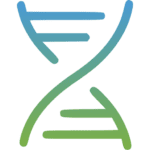A look into how PeopleTree Group creates employee-centric HR tech that helps them manage their career, and gives organizations information they need about their employees.
PeopleTree Group is a technology and consulting firm that focuses on creating talent management solutions hinged on data-rich people analytics. The goal? To help employees manage their careers, while also helping HR manage the value of talent they have. Founded in 1998, the company’s various products and solutions – TalentPrint, TalentTalker, People Analytics and Consulting – are now available in 47 countries. Here, we sit down with PeopleTree Group co-founders, Martin Sutherland and Yolanda Lacoma, to talk about how they got started, why they think people analytics is so important for business goals, and where they’re going next.
Tell us a bit about how PeopleTree started:
Martin: I had been working on developing software that would help people identify their strengths and provide HR with the information they needed to develop them. As the Internet grew as an enterprise technology, I developed the first version of the company, called “Capability Trading”. The idea was to have people list their talents and “freelance” them in a kind of “stock exchange” system. We implemented that in Eskom for 13,000 people over about four years.
Yolanda: I had been working at a company called Lominger as an associate for a few years, and I always liked the idea of using technology to have a more scientific and robust approach to Talent Management. Martin came in to demo the “Capability Trading” concept and I loved it. The product was very basic at the time, but with time and effort, we integrated other aspects of HR practices and created a better user interface, to create PeopleTree Group and push it internationally.
What inspired this kind of business?
Martin: When I was 20, I attended a small business development program and it covered things like how to market your business, define and refine your product, manage customers, manage finances etc. My first (and only) job was for a bank that asked me to design a career management program. I thought it would be useful for employees to think of themselves as a business, but when I was running a program called ME (Pty) Ltd, no-one had the information they needed to identify their strengths or connect those strengths with what a company was looking for. So, right from the start, it was about using technology to help people connect their strengths with opportunities.
Yolanda: I was inspired by my clients’ challenges and demands. They needed a fair way to evaluate their talent that couldn’t be manipulated, but it also had to be fast and easy to scale.
What is the ultimate goal of the business?
Martin: To use technology to create an engaging user experience that helps people manage their careers, which simultaneously provides a company with the information they need to manage the value of talent they have.
Yolanda: Help our clients to make better decisions about their talent. We focus on evidence-based HR practices. Rather than relying on gut instinct, evidence-based HR involves using data to support their decisions.
What do you think are the biggest challenges that HR teams face today?
Martin: A lack of user-centric thinking. Solutions are nearly always designed for HR, and provide little to no value to employees. Data is essential for optimizing the value of talent, but your talent will not give you the data you need unless they get something in return. A user-centric perspective prioritizes the value you can add to the user. If a company only thinks about how it can make money, not how it can provide value to its customers, it will go out of business. The same goes for its employees.
Yolanda: Leadership development is critical to keep the management team engaged and motivated, and prepares them to take on more responsibilities in the future. It is important to make it part of their culture. It is also very important to adapt to innovation. Technology is constantly changing and businesses must be quick to adapt, or risk being left behind by their competitors. We also need to recognize that HR is not about HR, but about delivering business value with a user-centric focus.
How do PeopleTree solutions solve those challenges?
Martin: We design technology with the person using it in mind. Make it simple, keep it relevant, give it purpose and make it look nice. Once you do that, you have a sustainable source of talent data. Then you can maximize the value of the talent within the company through performance management, learning and development, leadership development, optimal deployment and focused retention actions.
What do you feel is the most important thing to do, when it comes to developing your employees?
Yolanda: Development opportunities in an organization are key to improving an employee´s satisfaction and engagement. Most managers feel uncomfortable having performance discussions with their direct reporters, and that’s why these discussions rarely happen. They should provide the context for developing new skills. The most effective managers need to take the time and use technology (data and language) to discuss development plans and challenge their direct reports to accomplish goals. Some people are a better fit for some jobs, and finding a job that fits a person’s ability not only helps that employee but the organization also wins.
You talk a lot about unlocking talent and potential – what does that mean to you?
Martin: When you hire someone, they either add value or destroy value in your business. There is no middle ground. The challenge every company has is to understand what that value is when they hire from outside, or promote from within, and find the right place (where they get the most value from the talent) for that person in the business. Hiring is difficult enough, but even when companies get it right, they very often then systematically get in that person’s way or accidentally decrease that value by moving them into a role that doesn’t play to their strengths. To unlock value, you have to know what a person’s talent is, and what it isn’t, and you need to understand what it takes to add value to a specific job.
Yolanda: We need to focus on understanding the employee’s strengths to understand the value within a specific context (jobs). Feedback is important if you want to make sure that your employees are always improving. How can you expect them to stop doing things wrong and do things better if you’re not giving them feedback relating to the work they do?
What is people data – and why is it valuable to a business?
Martin: If you went to a doctor who diagnosed you with high cholesterol without running any test, your best move is to go to another doctor. Misdiagnosing someone, and prescribing them the wrong medicine would be frowned upon. But when it comes to “diagnosing” people’s talent, everyone thinks they can do it accurately by guessing, and there is a mountain of evidence that shows they can’t. Data tends to drive almost all business decisions, except people decisions.
What have been some of your biggest successes in terms of helping organisations unlock potential?
Martin: I think the greatest indicator of success for us is the longevity of the relationships that we have had with our clients. We have several clients who have been using our system for more than 10 years, with the longest standing client having used our technology for 13 years. If it didn’t add value, it would have been discarded years ago.
Yolanda: We deliver results but we also have very close relationship with our clients without creating a dependency (we train HR practitioners and coaches on regular basis). We have testimonials from some clients saying they do not make a people decision without looking at the data first.
What’s next for Peopletree Group?
Martin: Even though we are a technology business, our strategic differentiator is customer intimacy. Our clients have direct access to myself and Yolanda and we understand the business of their business intimately. We have a portfolio of clients, predominantly large multi-nationals, that we want to ensure get maximum value from their relationship with us. We are, and will continue to be, very careful about who we add to that portfolio so that we can maintain that level of understanding and trust.
Yolanda: HR is not just about talent (competence, employee, workforce), but also about organization (capability, culture, workplace). We need to help our clients embrace and utilize technology in the most valuable way to make better decisions, and prove the value that HR delivers to the business.






